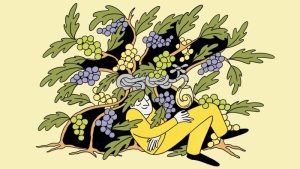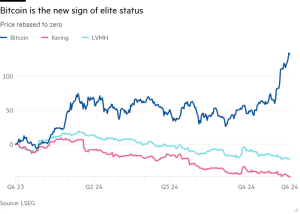Designer Ori Orisun Merhav is bringing shellac back
Unlock the Editor’s Digest for free
Roula Khalaf, Editor of the FT, selects her favourite stories in this weekly newsletter.
Most 24-year-olds go to Thailand looking for a good time. But Ori Orisun Merhav was looking for a particular type of insect when she boarded the plane to Bangkok in November 2020. She had been in touch with a company that specialises in shellac, a material made from a natural polymer produced by the lac beetles of northern Thailand.
When I meet Merhav in Brussels, on a typically grey day, she is getting used to her new studio — a pair of airy upstairs rooms in a former textile factory. On a canal, next to the city’s best bakery, the factory is home to 12 creatives under 30 — from DJs to filmmakers — and is probably the coolest place in town. “Watching sunsets in Tel Aviv was my favourite thing,” sighs the Israeli-born Merhav, looking at the silver sky outside the window.
Merhav, 28 and diminutive, is dressed in off-white dungarees over a crumpled white T-shirt, her dark hair hidden under a bright vintage scarf. Around her are the results of the journey she made four years ago: near-transparent blossoming like huge flowers. They are made of dozens of fine bubbles, which Merhav blows from melted shellac in the same way as glass. Each takes up to five days to make. Some are fitted with lightbulbs, giving off a gentle golden glow. Others are clustered into a trailing chandelier that hangs with rococo joie de vivre above a table. All will be on show at the PAD art and design fair in London (October 8-13), on the stand of gallerist Sarah Myerscough.


For Merhav, these objects are as much conversation-starters as works of collectible design. “I see them as a portal — a way to talk about new ideas,” she says. “In art and design, we have the power to visualise and materialise ideas that can take us one step nearer to a new reality.” The reality she is proposing is one where we use different materials and materials differently. “I’m not interested in replacing synthetic polymers completely,” she says, “but in using both biomaterials and man-made ones in their right place.”
Shellac was once used to make records, those heavy black 78rpm ones. (Merhav says she has never seen one in person, let alone held one in her hands.) Safe for human consumption, it is still used to coat apples and pharmaceutical pills and as an all-but-invisible finishing varnish on wooden furniture. It could be used for many more products, but it has been widely forgotten.
“Fifty years ago, we harvested 50 per cent more,” says Merhav. “But as a material it doesn’t really have a personality, so it’s easy to overlook. I’m hoping that working in three dimensions and giving it new form, expression, functionality, we will start to think about it again.”
Merhav tried using it in sheet form, as a seat for a chair she carved out of a hunk of teak, but it was slippery as ice. The most viable option for its use will be making objects with 3D-printing. Her specially modified printer was arriving two days after my visit.
Merhav studied at the experimental design school in Eindhoven and, thanks to Dutch ancestry on her mother’s side, can stay in the Netherlands for as long as she likes. She is reticent about the current situation in Israel — we are here to discuss beetles, after all — but admits that for now she can’t imagine going home.


It was at Eindhoven that she started to think about what she calls “resources”. “The border between what we consider resource and waste is very fine,” she says. At first she worked with eggshells, avocado seeds and human hair. “When you boil down avocado pits, they make something like Play-Doh,” she says. She made plant pots that you could use, then plant in the soil where they would decompose.
Then she began to look at mutualism in nature, where one species benefits from, but does not overly exploit, another. Female lac beetles make elaborate cocoons in which they lay their eggs by extracting sugars from tree branches; they convert these sugars into a secretion which is used to make cells. “It is an incredible communal act of architecture,” says Merhav. “The insects are as small as grains of sand but they work together perfectly. They never take too much sugar from the tree, because the tree is their host and they need to keep it alive.”

When Merhav went to Thailand, she met farmers for whom shellac production is a sideline. Their primary occupation is growing vegetables: the trees on which the beetles live provide shade and wind barriers. She sat with them and scraped the cocoons, which take 10 months to form, off the branches by hand into tarpaulin sheets on the ground. This was then sent to a factory to be made into crystals, which she melts down into a gooey liquid before blowing it.
“My world now is insects and shellac,” says Merhav, “but there are so many other options for biomaterials, and amazing labs developing them. I’m just a small part.” In the end, though, it is a question of economics. Prices of biomaterials are unlikely to ever be as cheap as harmful plastics such as PVC. But in Merhav’s world we can at least strive to find a new balance. “We need to think like the beetles,” she says, “and not take too much sugar from the tree.”
oriorisun.com
#Designer #Ori #Orisun #Merhav #bringing #shellac




